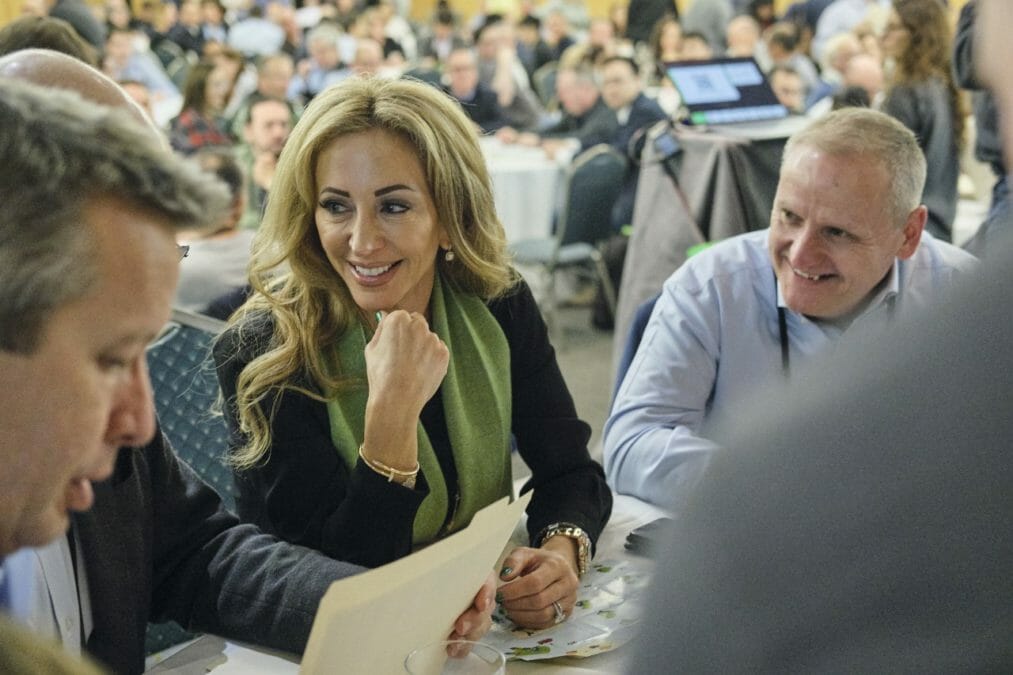In a recent interview with Information Age, Melissa Di Donato, CEO at SUSE, explained the main customer challenges that she has seen since taking over the role in July 2019. And, why addressing these challenges was central to her business strategy.
“I have a clear revenue goal, which is to reach a billion in revenue by 2023,” she said.
To achieve this, Di Donato had to consider her strategy and she established that the base side of SUSE’s business strategy had to be defined by their existing customers.
“I realised very quickly that I needed to have organic growth with our existing customers, with good, healthy commercial success and innovation at the core — we need to continue to develop our emerging technologies, on top of what we’re already excelling in, which is the operating system solutions and technologies associated with that,” she continued.
Aside from prioritising organic growth, the expansion of SUSE’s output, Di Donato also explained she needed to consider inorganic growth “as a way to compliment our desired trajectory and our commitment to our customers through M&A activity” to help solve SUSE’s customer challenges.
SUSE CEO: avoiding disruption with open source and how her focus has changed
SUSE’s customers
SUSE has what it calls “heavy in the traditionalist” customers, in that they have very complex large infrastructure that supports very complex operating environments.
These type of customers depend on SUSE to help them simplify, modernise and accelerate, in order for them to be a better partner and provider of their solutions for their customers.
Customer challenges focus on how to simplify
In terms of the types of customer challenges, Di Donato added that she was “overwhelmed by the similarities of the requirements that our customers have had.”
The first thing she heard from SUSE’s customers was that they needed help to simplify.
Many of these customers have a very extensive and complex IT department or environment that has been grown organically through what Di Donato describes as a “hodgepodge of apps, data and technology solution sets.”
Over time, it’s become almost impossible to simplify that integrated set of systems.
“In a world where we chose technology and took IT as a way to simplify, we’ve only created more complexity,” she added.
Large and complex environments
The IT landscape that most of SUSE’s customers are dealing with is large and complex environments.
They need help me simplify these by breaking down the IT walls and all the technology in the infrastructure and the stack. Once this has been achieved, only then can businesses begin to modernise, without sacrificing efficiency or security.
Other considerations include having the data server up in the right places, establishing economies of scale and reducing the need human intervention — “our customers need all of these things before they can start to modernise.
How to make containers an IT architect’s best friend
Containers
Containers is very overused word today and with the rise of edge computing, cloud and technologies like AI, what does this all mean?
“If I use AI or go to the cloud or edge am I modern?”, asks Di Donato.
Once customers simplify, which is the first step in SUSE’s strategy, the company can then help them begin to modernise by bringing their applications and data into a modern computing world via containers; “this means they can get access to the cloud quicker, whether it’s hybrid or multi-cloud, or whether it’s a completely disconnected and fragmented environment,” she said.
Whatever the situation, business should be asking what are the underlying technologies that they ned to power and operate their systems in a way that they can gain the maximum amount of efficiencies.
“In my first 100 days as CEO my aim was to meet 100 customers to understand their main challenges. I’ve managed 97 so far” — Melissa Di Donato
Scale and accelerate
Once customers have simplified and modernised, the next challenge is ensuring that they can scale and accelerate.
“This is where we bring our services and products to a customer faster,” Di Donato continued.
A robust strategy
SUSE combines it’s simplify, modernise and accelerate strategy with “our corporate social responsibility and the accountability that we maintain by living with out open source values,” she explained.
“Our value system is built on an open source ethos, but its also one that’s quite robust; as a business we understand the technologies that are used to operate companies.
The impact of the coronavirus on the UK tech sector: disruption ahead?
The impact of Covid-19 on business strategy
The Covid-19 outbreak has impacted business leaders’ ability to make decisions.
Decisions are going to be constrained and put back, because budgets and normality have been disrupted.
However, decisions around running an operating system or a mission-critical system can’t be ignored.
In this scenario, Di Donato is confident SUSE is in a good place to deliver strong solutions to the industry.
“We’re in a place that’s completely uninterrupted to our customers. We’re in a place where innovation is accelerating faster than any proprietary software component, because of the by sheer volume of our open source community — and we’re in an industry that’s desirable right now, because we’re going to continue to drive the importance of innovation on cost savings and value, which is now more important than ever before,” she concluded.







